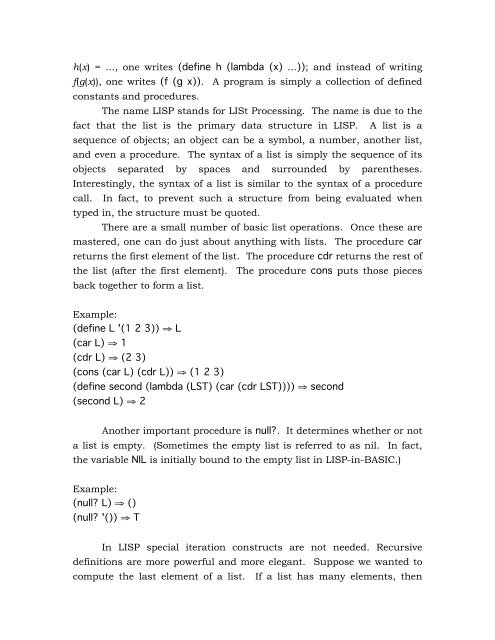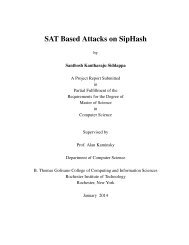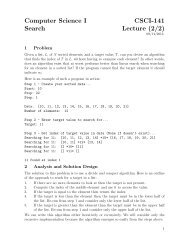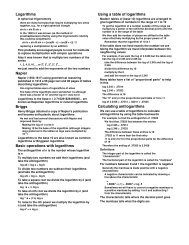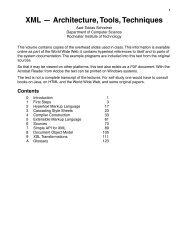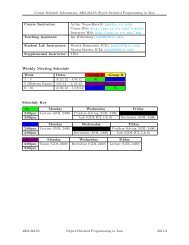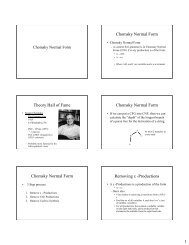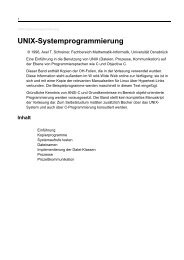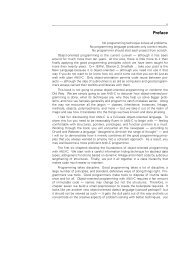Documentation for LISP in BASIC
Documentation for LISP in BASIC
Documentation for LISP in BASIC
You also want an ePaper? Increase the reach of your titles
YUMPU automatically turns print PDFs into web optimized ePapers that Google loves.
h(x) = ..., one writes (def<strong>in</strong>e h (lambda (x) ...)); and <strong>in</strong>stead of writ<strong>in</strong>g<br />
f(g(x)), one writes (f (g x)). A program is simply a collection of def<strong>in</strong>ed<br />
constants and procedures.<br />
The name <strong>LISP</strong> stands <strong>for</strong> LISt Process<strong>in</strong>g. The name is due to the<br />
fact that the list is the primary data structure <strong>in</strong> <strong>LISP</strong>. A list is a<br />
sequence of objects; an object can be a symbol, a number, another list,<br />
and even a procedure. The syntax of a list is simply the sequence of its<br />
objects separated by spaces and surrounded by parentheses.<br />
Interest<strong>in</strong>gly, the syntax of a list is similar to the syntax of a procedure<br />
call. In fact, to prevent such a structure from be<strong>in</strong>g evaluated when<br />
typed <strong>in</strong>, the structure must be quoted.<br />
There are a small number of basic list operations. Once these are<br />
mastered, one can do just about anyth<strong>in</strong>g with lists. The procedure car<br />
returns the first element of the list. The procedure cdr returns the rest of<br />
the list (after the first element). The procedure cons puts those pieces<br />
back together to <strong>for</strong>m a list.<br />
Example:<br />
(def<strong>in</strong>e L '(1 2 3)) ⇒ L<br />
(car L) ⇒ 1<br />
(cdr L) ⇒ (2 3)<br />
(cons (car L) (cdr L)) ⇒ (1 2 3)<br />
(def<strong>in</strong>e second (lambda (LST) (car (cdr LST)))) ⇒ second<br />
(second L) ⇒ 2<br />
Another important procedure is null?. It determ<strong>in</strong>es whether or not<br />
a list is empty. (Sometimes the empty list is referred to as nil. In fact,<br />
the variable NIL is <strong>in</strong>itially bound to the empty list <strong>in</strong> <strong>LISP</strong>-<strong>in</strong>-<strong>BASIC</strong>.)<br />
Example:<br />
(null? L) ⇒ ()<br />
(null? '()) ⇒ T<br />
In <strong>LISP</strong> special iteration constructs are not needed. Recursive<br />
def<strong>in</strong>itions are more powerful and more elegant. Suppose we wanted to<br />
compute the last element of a list. If a list has many elements, then


